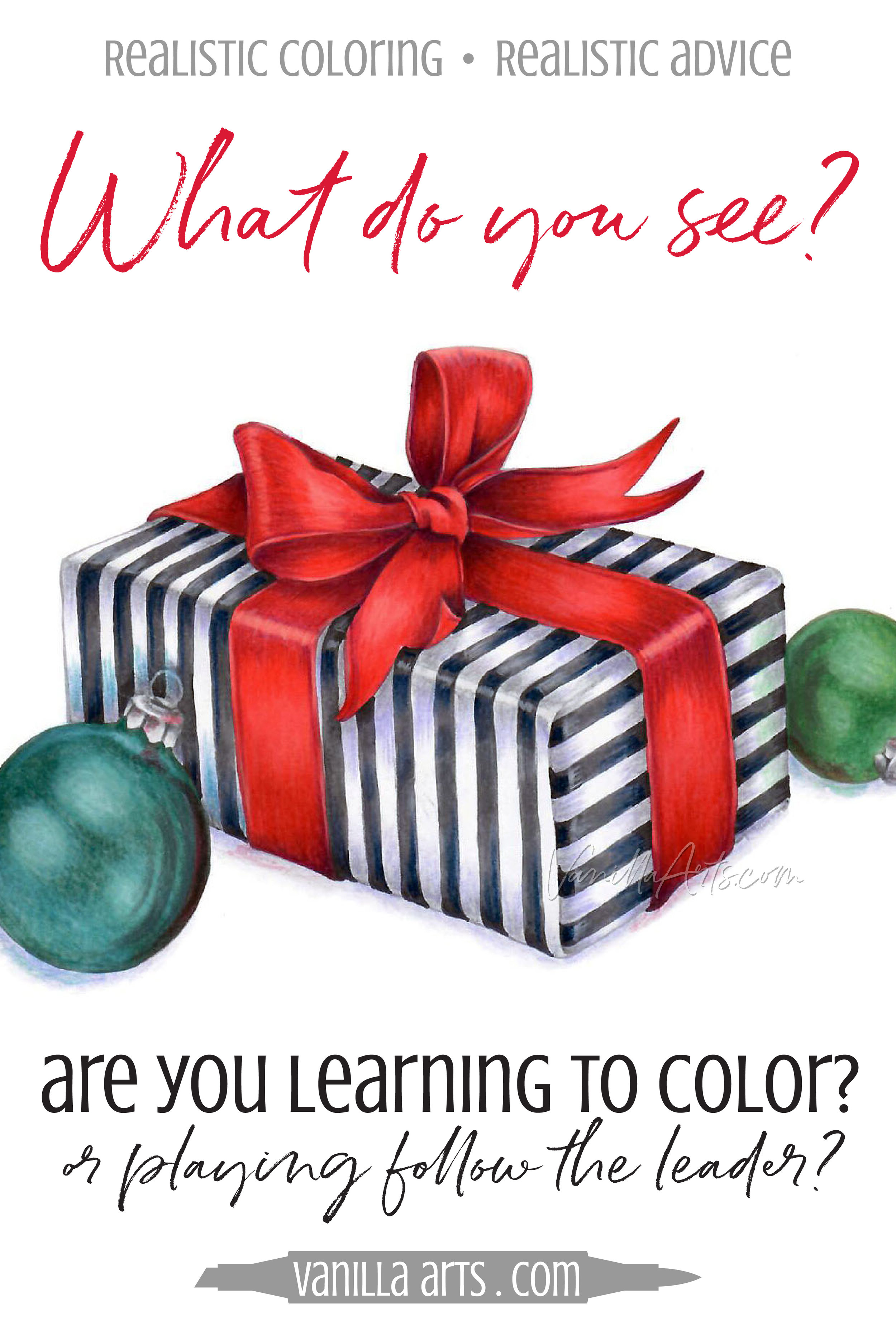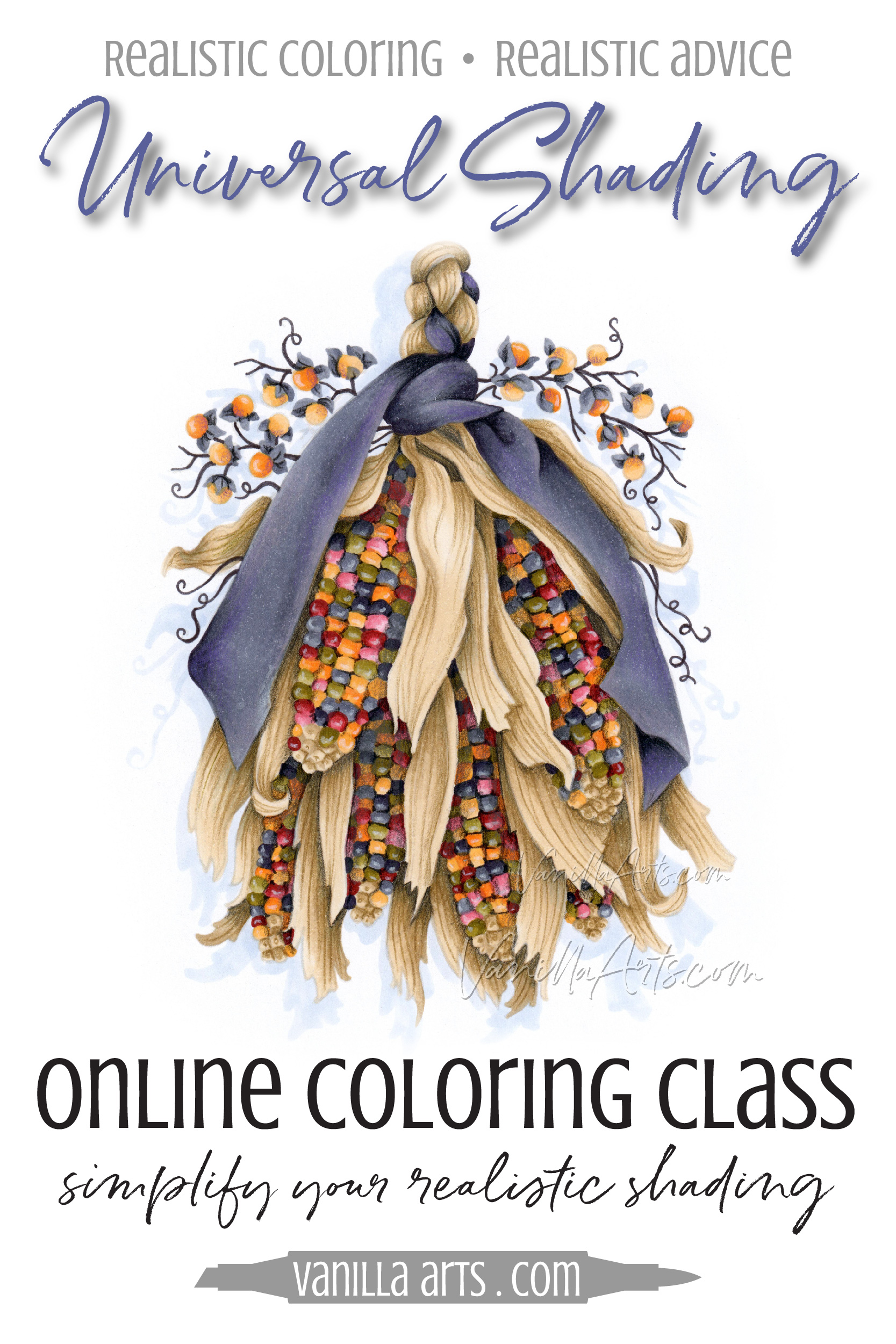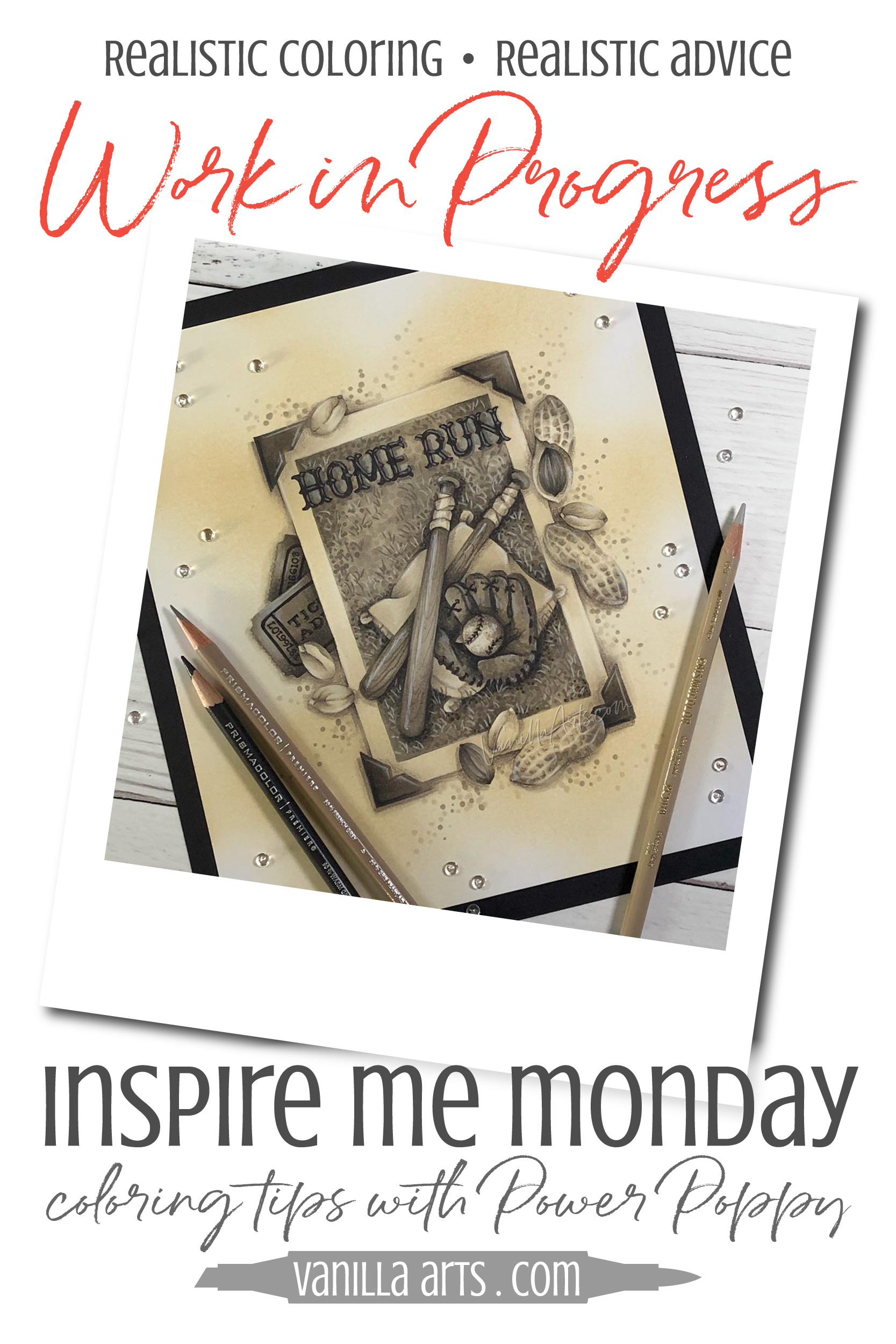
Learn to Capture Accurate details for Realism (coloring Classes vs. demonstrations)
Do you want to play a game? “Okay class, pick up your R35 and we will color the tail of this ribbon.” That’s how Copic and even some colored pencil classes work, right? If you do exactly what the teacher does, you’ll end up with something amazing. And it works… Kinda. You walk away with a very pretty project. Your Christmas scene looks just as cute as the instructor’s. Your ribbon is smooth, your ornaments look shiny and the box looks perfectly dimensional… maybe even realistic.

Copic Marker + Colored Pencil: Shading Complex Objects (Online coloring lesson)
Wow, that is so complicated!
What did you think when you first saw the Indian Maize project here?
All those Copic Markers on each little kernel? And then she added colored pencil over the top of each one? I’ll bet it took weeks to color!
Weeks? Really?
I’ve noticed over the years, some very experienced Copic Marker fans add lots of extra steps to the coloring process that don’t really pay off in the end.
A lot of people make dimensional coloring harder than it has to be.
Do you?

